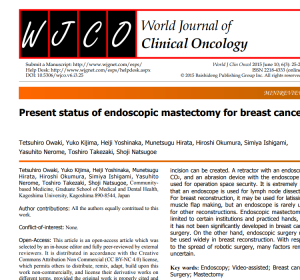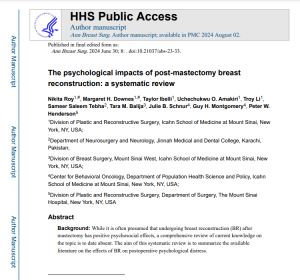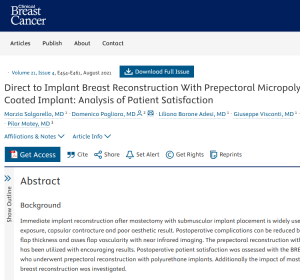
MEDICAL EDUCATION

Present status of endoscopic mastectomy for breast cancer of Clinical Oncology
Endoscopy is now being used for breast cancer surgery. Though it is used for mastectomy, lymph node dissection, and breast reconstruction, its prime use is for mastectomy. Because an incision can be placed inconspicuously in the axillary site, a relatively large incision can be created. A retractor with an endoscope, CO2, and an abrasion device with the endoscope are used for operation space security. It is extremely rare that an endoscope is used for lymph node dissection. For breast reconstruction, it may be used for latissimus muscle flap making, but an endoscope is rarely used for other reconstructions. Endoscopic mastectomy is limited to certain institutions and practiced hands, and it has not been significantly developed in breast cancer surgery. On the other hand, endoscopic surgery may be used widely in breast reconstruction. With respect to the spread of robotic surgery, many factors remain uncertain.

The psychological impacts of post-mastectomy breast
reconstruction: a systematic review
Background: While it is often presumed that undergoing breast reconstruction (BR) after mastectomy has positive psychosocial effects, a comprehensive review of current knowledge on the topic is to date absent. The aim of this systematic review is to summarize the available literature on the effects of BR on postoperative psychological distress.
Methods: A systematic review of the literature was performed using PubMed, Google Scholar, EMBASE, PSYCinfo, and Web of Science. Inclusion criteria included clinical studies of patients who underwent BR post-mastectomy with psychological distress assessments as primary outcomes. Articles were independently reviewed and assessed for bias and evidence quality. Analyses were performed among patients receiving mastectomy alone (MA) versus mastectomy with breast reconstruction (MBR)…

